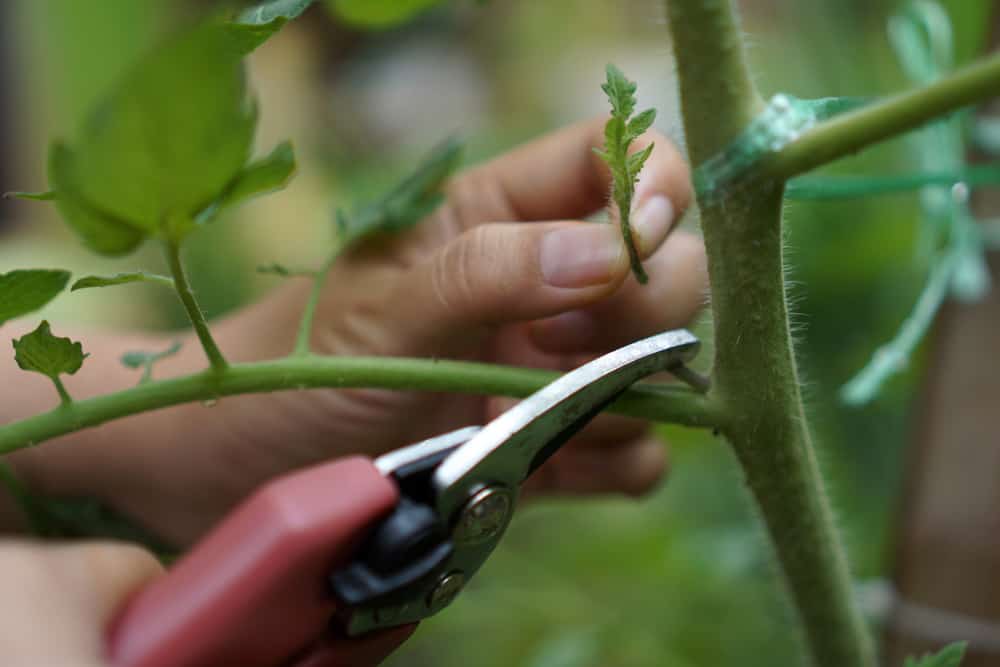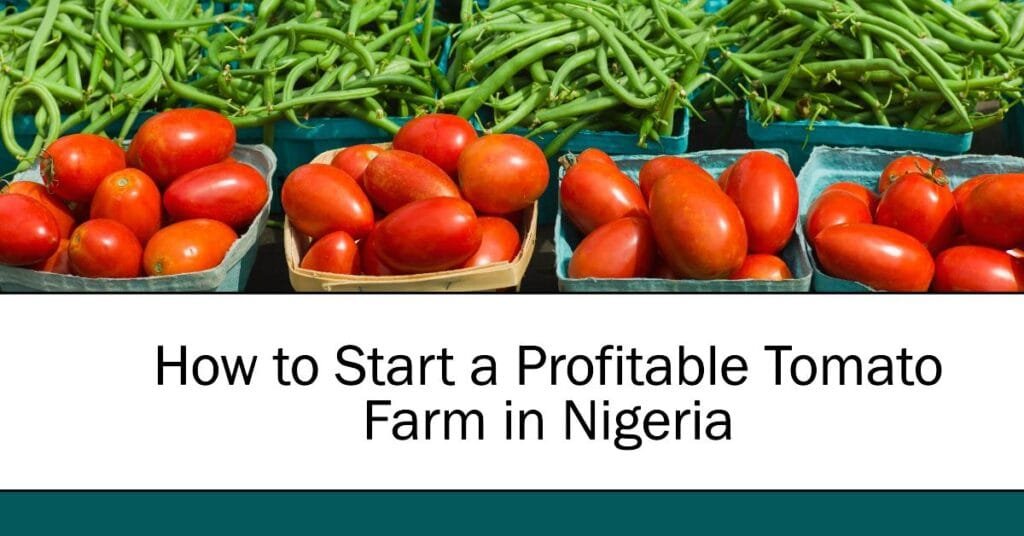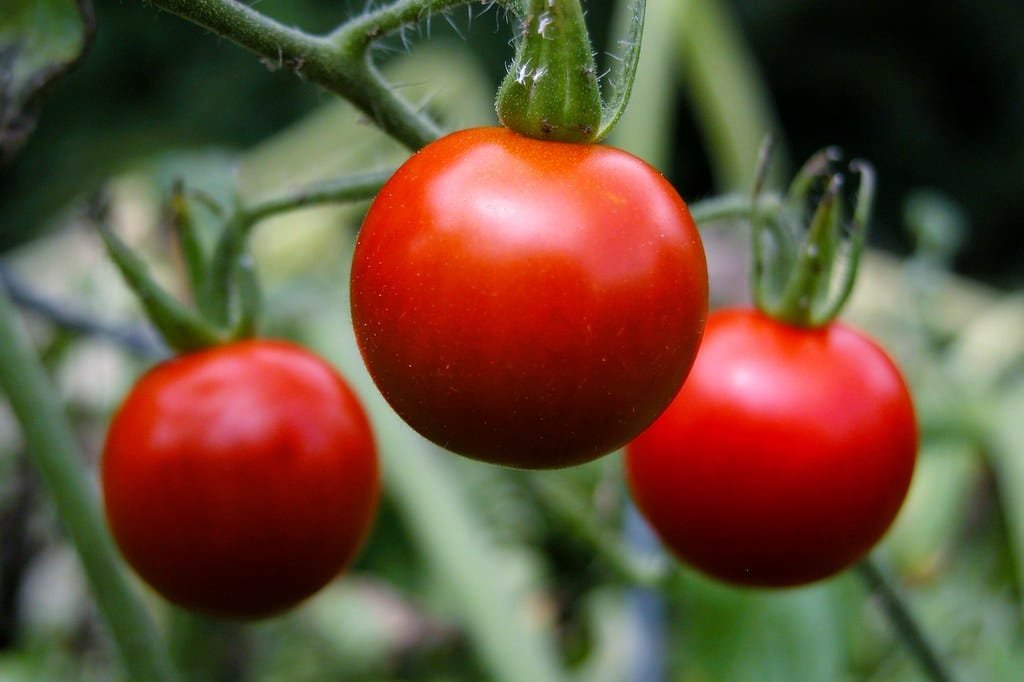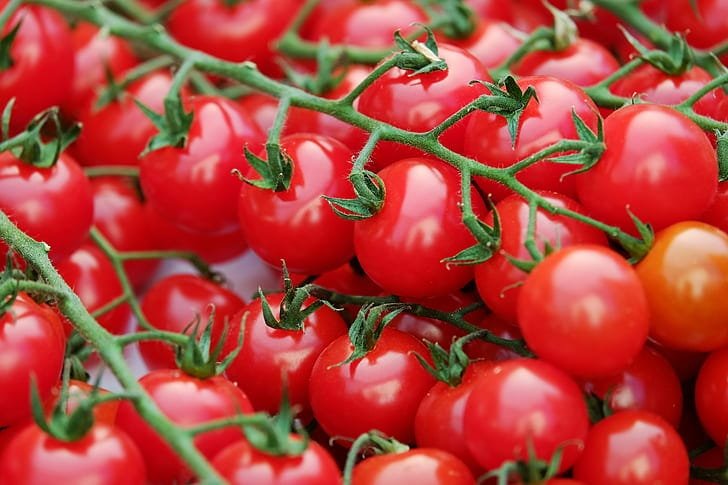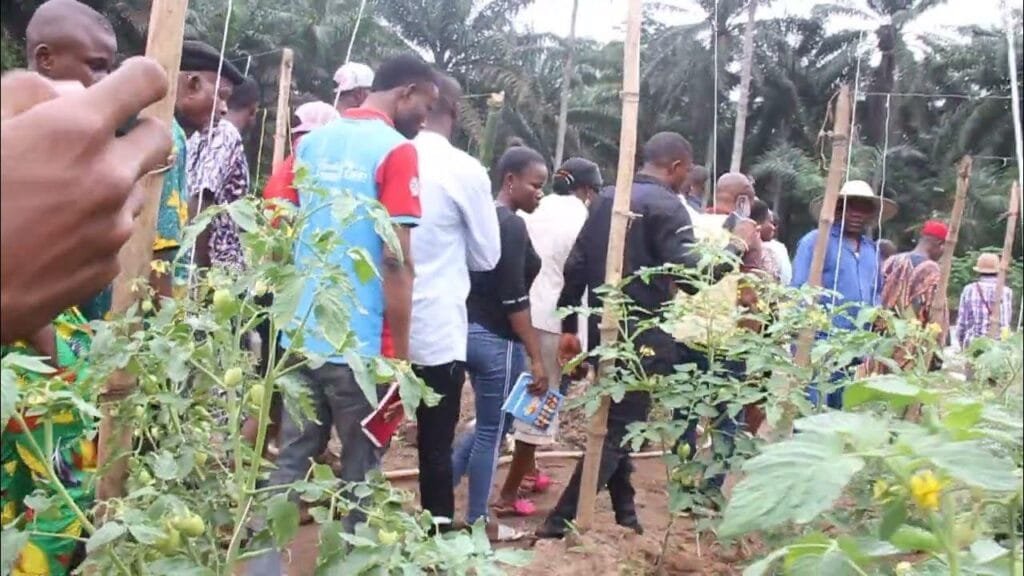If you’ve ever wondered why some tomato plants produce an abundance of big, juicy tomatoes while others struggle with weak growth and tiny fruit, the answer often lies in proper pruning. Pruning tomato plants isn’t just about aesthetics—it’s about maximizing airflow, preventing disease, and directing energy toward fruit production instead of excessive leafy growth.
In this guide, I’ll take you through everything you need to know about pruning tomato plants like a pro—from understanding the role of suckers to identifying which leaves and shoots to remove. We’ll also cover the biggest mistakes people make, pruning techniques for different tomato varieties, and even some surprising hacks (like using baking soda for healthier plants!).
By the end, you’ll know exactly how to prune your tomato plants for stronger vines, bigger harvests, and healthier, disease-resistant crops. Let’s BEGIN!
Understanding Tomato Suckers – What Are They, and Why Should You Care?
If you’ve ever looked at a thriving tomato plant and noticed those little shoots growing in the crooks between the main stem and the branches, congratulations—you’ve found tomato suckers! But don’t let the name fool you; these tiny growths aren’t just freeloaders stealing energy from your plant. In fact, they play a crucial role in determining how your tomato plant grows, how much fruit it produces, and even how vulnerable it is to disease.
So, what’s the deal with suckers? Should you remove them? Let them grow? The answer isn’t always black and white, and that’s exactly why understanding them is so important.
The Role of Tomato Suckers in Plant Growth
Suckers are essentially secondary shoots that emerge in the junctions (also called axils) between the main stem and the leaf branches. If left alone, these shoots will develop into full-fledged branches, complete with their own leaves, flowers, and eventually fruit. That sounds like a good thing, right? More branches, more fruit? Well, not necessarily.
While suckers can produce fruit, they also create a denser, bushier plant, which has its downsides. More foliage means less airflow, which increases the risk of fungal diseases like early blight (Alternaria solani) and powdery mildew. Additionally, when the plant puts too much energy into growing new stems and leaves, it diverts energy away from ripening existing fruit, leading to smaller and less flavorful tomatoes.
To Prune or Not to Prune? The Great Sucker Debate
Gardeners have been debating the best way to handle tomato suckers for decades, and the truth is, there’s no one-size-fits-all answer. The decision to remove them depends on the variety of tomato you’re growing, your climate, and your personal gardening goals. Let’s break it down:
Indeterminate Tomatoes: The Case for Pruning
Indeterminate tomato varieties—like ‘Brandywine,’ ‘Cherokee Purple,’ and ‘Sun Gold’—keep growing taller and producing fruit all season long. Because of their continuous growth, they can become unwieldy if not pruned. Removing suckers helps control their size, improve airflow, and encourage larger, more robust fruit production. Many experienced growers opt to remove all but one or two suckers, allowing the plant to develop a strong central structure while still benefiting from some extra fruit production.
Determinate Tomatoes: A Hands-Off Approach
Determinate varieties—like ‘Roma,’ ‘Celebrity,’ and ‘San Marzano’—grow to a fixed height and produce fruit in a short, concentrated period. Since these plants already have a predetermined number of fruit-bearing branches, aggressively pruning suckers could reduce overall yield (University of California Extension, 2023). In this case, it’s best to leave most suckers alone, only removing those that are overly crowded or growing too close to the ground.
A Balanced Approach: Selective Pruning for Maximum Yield
Instead of an all-or-nothing approach, many expert gardeners recommend selective pruning, a method that allows you to strike a balance between fruit production and plant health. Here’s how:
- Remove lower suckers first. These are closest to the soil and most prone to disease.
- Keep a few suckers on healthy indeterminate plants to boost yields without creating excess foliage.
- Regularly check for suckers throughout the growing season, rather than removing them all at once. This reduces stress on the plant.
The Surprising Benefits of Strategic Sucker Management
Managing suckers isn’t just about controlling the shape of your tomato plant—it can actually impact the taste and quality of your tomatoes. Studies show that properly pruned tomato plants tend to produce sweeter, more flavorful fruit because the plant directs more energy toward ripening existing tomatoes instead of supporting excessive leaf growth.
Additionally, plants with fewer suckers have better air circulation, reducing humidity levels around the foliage and lowering the risk of common fungal diseases. This is particularly important in humid regions where blight and mildew can devastate tomato crops.
At the end of the day, understanding tomato suckers gives you more control over how your plants grow. Whether you choose to prune aggressively, leave them alone, or take a balanced approach, the key is knowing how these little shoots affect your plant’s health and productivity. Pay attention to how your plants respond, adjust your strategy as needed, and you’ll be well on your way to a more abundant, healthier tomato harvest!
How to Spot Tomato Suckers Like a Pro
Ever felt like your tomato plant was growing a little too wild? You’re not imagining things. Those extra leafy shoots appearing in the crooks of your tomato plant’s branches? Those are tomato suckers, and while they might look harmless (even promising), they can either make or break your plant’s success.
Now, let’s talk about how to spot them quickly and what to do next.
What Exactly Are Tomato Suckers?
A tomato sucker is a small, new growth that appears in the axil—the junction where the main stem meets a leaf branch. At first, it’s just a tiny sprout, barely noticeable. But give it some time, and it will grow into a whole new branch, complete with leaves, flowers, and eventually fruit.
Sounds good, right? Not always. While suckers can produce fruit, they also suck energy (hence the name) away from the main plant, potentially weakening overall production. That’s why many gardeners remove them to direct the plant’s strength toward healthier, bigger tomatoes.
But before we get too far ahead, let’s make sure you can spot them right away so you know exactly what you’re dealing with.
How to Identify Tomato Suckers Easily
The key to spotting tomato suckers? Look in the “V” shape.
Whenever you check your tomato plants, focus on the point where the main stem meets the leaf branch. If you see a new shoot sprouting between them, that’s your sucker.
Here’s what to watch for:
- Size – When they first emerge, suckers are tiny—just a small green bud. But they grow fast! Within a week, that little sprout can turn into a full-fledged branch.
- Location – They always appear at the junction where leaves meet the main stem, never on their own.
- Appearance – They look like miniature versions of the plant itself, with tiny leaves and a soft green stem.
Pro Tip: Differentiate Suckers from Other Growth
A common mistake? Confusing suckers with essential growth. Not all extra stems are suckers. Some side branches are part of your plant’s natural development and should stay put.
Here’s an easy trick:
- If it’s growing directly from the main stem at the leaf junction, it’s a sucker.
- If it’s a regular branch extending from the main stem, it’s part of the plant’s natural structure and should stay.
Incase you’re in doubt, let it grow for a couple of days. A true sucker will develop its own leaves and a full branch structure, while essential growth will look more like an extension of the main plant.
Why This Matters
Catching suckers early is the difference between a well-managed, productive tomato plant and one that’s an overgrown mess. Too many suckers mean too many branches competing for sunlight and nutrients. When that happens, your plant spends more energy growing leaves and stems rather than producing high-quality fruit.
By learning how to spot and manage suckers effectively, you take full control of your tomato plant’s growth, ensuring healthier, stronger yields all season long.
Now that you know how to identify them, what should you do next? Let’s talk about why Pruning Your Tomato Plants is a Game Changer.
Why Pruning Your Tomato Plants is a Game Changer
Let’s get one thing straight—pruning isn’t just about keeping your tomato plants looking tidy. It’s a power move that can transform your harvest, giving you bigger, juicier, and healthier tomatoes. Some gardeners hesitate, afraid they’ll damage the plant, but trust me—when done right, pruning can be the difference between a plant struggling to produce and one thriving with abundant fruit.
So, why should you grab those pruning shears and get to work? Let’s break it down.
More Sun, More Energy, More Fruit
Tomato plants are sun lovers—the more light their leaves get, the better they photosynthesize. But when your plant turns into a jungle of tangled branches and excess leaves, the lower sections don’t get enough sun. The result? The plant wastes energy growing unnecessary foliage instead of focusing on fruit production.
By pruning away unnecessary leaves and suckers, you’re opening up the plant, allowing sunlight to penetrate deep into the canopy. This means:
- Stronger, healthier growth
- More efficient photosynthesis (aka more energy for producing fruit)
- Better air circulation (which prevents disease—more on that in a second)
In short, less leaf clutter equals more productive tomato plants.
Disease Prevention: A Major Lifesaver
Ever seen black spots, yellowing leaves, or mushy, rotting stems on a tomato plant? That’s often caused by fungal and bacterial diseases, which thrive in moist, crowded environments.
Tomato plants are highly susceptible to diseases like early blight, late blight, and Septoria leaf spot. And guess what? These problems spread like wildfire when plants are dense and air circulation is poor.
Pruning fixes this by creating airflow, allowing leaves to dry quickly after rain or morning dew. Fewer wet leaves = less disease risk. Plus, when plants are pruned, you can easily spot early signs of disease and act before it spreads.
Bigger, Better, Tastier Tomatoes
Left to grow wild, a tomato plant will try to do too much at once—it’ll keep pushing out leaves, flowers, and fruit all at the same time, which spreads its energy thin. The result? Smaller, less flavorful tomatoes.
But when you strategically remove excess growth, you’re telling the plant, “Hey, focus your energy where it matters—on making the biggest, best-tasting tomatoes possible.”
Pruned tomato plants channel their nutrients into fewer fruits, but those fruits end up:
- Larger (because they get more of the plant’s resources)
- Sweeter and more flavorful (because energy isn’t wasted on excess leaves)
- Earlier ripening (since the plant isn’t struggling to keep up with unnecessary growth)
Think about it this way—would you rather have 20 tiny, bland tomatoes or 10 big, delicious ones? That’s what pruning helps achieve.
Easier Maintenance and Harvesting
Ever tried to pick tomatoes from an overgrown plant? It’s a struggle. Unpruned plants become a tangled mess, with branches sprawling everywhere and fruit hiding deep in the chaos.
Pruning keeps plants neat, manageable, and easy to work with. You can see exactly where your tomatoes are growing, making harvest time a breeze. Plus, with better airflow and visibility, you can quickly spot and remove any diseased or damaged fruit before it becomes a bigger problem.
The Bottom Line
Pruning isn’t about harming your plant—it’s about helping it thrive. It keeps your tomato plants healthier, boosts fruit quality, prevents disease, and makes your garden easier to manage. Once you get the hang of it, you’ll wonder why you ever hesitated to start pruning in the first place.
And don’t worry—I’ll walk you through exactly how to prune the right way in the next section. Stay tuned!
Step-by-Step Guide to Pruning Tomato Plants
Pruning tomato plants isn’t just about snipping off extra growth—it’s about guiding the plant’s energy where it matters most. Done right, pruning leads to bigger, juicier tomatoes, fewer disease problems, and a more manageable garden. But knowing when and how to prune can make all the difference. Let’s break it down step by step, so you can maximize your tomato harvest.
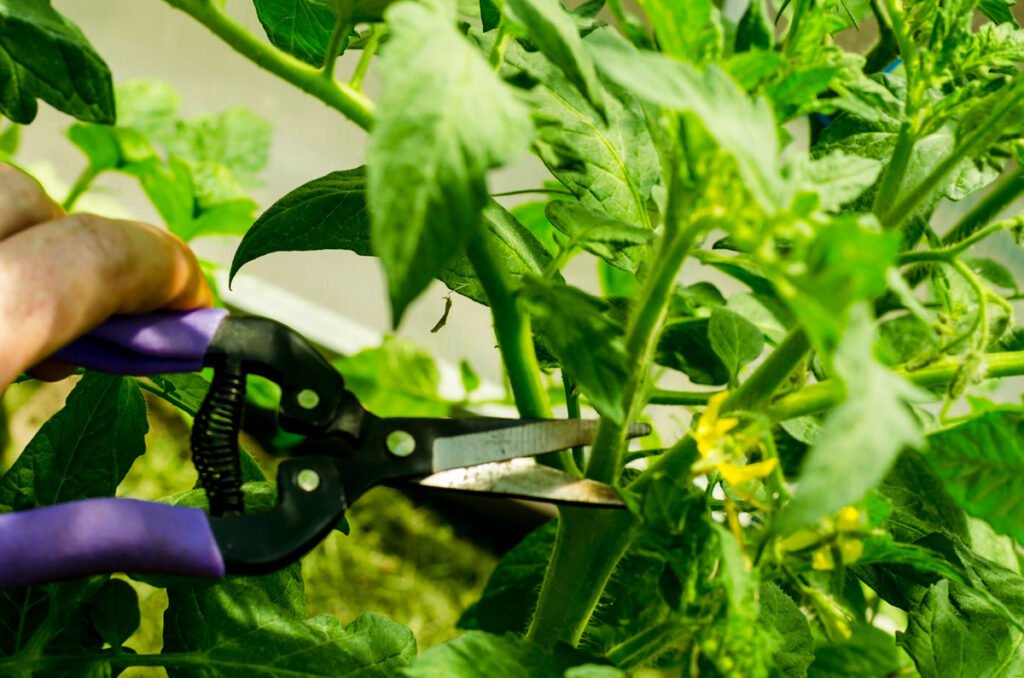
Tools Needed for Pruning
Before we get started, let’s talk tools. A good pruning job starts with the right equipment:
- Sharp pruning shears – Clean cuts prevent plant damage and reduce disease risk.
- Garden gloves – Tomato plants can be a little sticky, and gloves keep your hands clean and protected.
- Rubbing alcohol or a disinfectant – Wiping your shears between cuts helps prevent the spread of plant diseases.
While some gardeners pinch off suckers with their fingers, using a tool ensures a clean cut and prevents unnecessary tearing. Investing in quality shears will make the process smoother and more effective.
When to Prune Tomato Plants
Timing is everything. Start pruning once your tomato plant is about 12-18 inches tall and has a sturdy main stem. If you wait too long, the plant may put too much energy into extra foliage rather than fruit production. Here’s a rough timeline to follow:
- Early Growth (First Few Weeks): Let your plant establish itself before doing any major pruning.
- Once Flowering Begins: This is the best time to start removing suckers and lower leaves.
- Throughout the Season: Continue light pruning every week or so to maintain airflow and fruit production.
- Near the End of the Season: Topping the plant (removing the topmost growth) can help direct energy to ripening fruit rather than new growth.
How to Remove Suckers from Tomato Plants
Suckers are those small shoots that grow in the “V” (axil) between the main stem and a branch. If left alone, they can turn into full-sized branches, taking up energy and crowding the plant. Here’s how to remove them properly:
- Identify the Suckers: Look for new shoots growing between the main stem and existing branches. These are easy to spot once you know what to look for.
- Decide Which to Remove: Not all suckers have to go! If you’re growing determinate (bush-type) tomatoes, light pruning is best since these plants stop growing at a certain point. If you’re growing indeterminate (vining) tomatoes, you can remove most suckers to focus energy on fruit production.
- Pinch or Snip: For small suckers (under two inches), simply pinch them off with your fingers. For larger ones, use sharp pruning shears to make a clean cut.
- Remove Lower Leaves: Any leaves touching the soil or looking yellow should be removed. This improves airflow and reduces the chance of fungal diseases.
- Don’t Overdo It: While pruning is beneficial, removing too much foliage at once can stress the plant. Aim for a balance—keeping enough leaves to shade fruit while clearing unnecessary growth.
Final Tips for Success
- Prune in the Morning – This gives the plant time to heal before evening moisture sets in, reducing disease risk.
- Always Disinfect Shears – A quick wipe with rubbing alcohol between cuts helps keep plants healthy.
- Support Your Plants – After pruning, use stakes or cages to support your tomatoes and prevent branches from breaking under the weight of the fruit.
Mastering pruning takes a little practice, but once you see the difference in your harvest, you’ll never skip it again. Healthy, well-maintained plants produce better-tasting, bigger tomatoes, and who doesn’t want that?
Common Tomato Pruning Mistakes to Avoid
Pruning tomato plants is a game-changer, but only if done correctly. Over-prune, and you risk sunburned fruit. Under-prune, and you’ll end up with a tangled mess of foliage, low airflow, and disease-prone plants. Let’s break down the most common pruning mistakes and how to avoid them so your tomato plants stay healthy and productive all season long.
1. Removing Too Many Leaves
It’s easy to get carried away with pruning, but stripping your plant of too many leaves can be harmful. Tomato leaves provide shade for the fruit, preventing sunscald—those ugly white or yellow patches that develop when tomatoes get too much direct sunlight. They also help regulate moisture levels, preventing the plant from drying out too quickly.
How to avoid it: Remove excess suckers and lower leaves, but always leave enough foliage to protect the fruit and maintain plant health.
2. Ignoring Airflow Needs
A thick, bushy tomato plant might look lush, but it’s a breeding ground for fungal diseases like blight. Poor airflow traps humidity around the plant, making it easy for diseases to spread.
How to avoid it: Regularly prune suckers and lower leaves to promote air circulation. A good rule of thumb is to keep the lower 6-12 inches of the plant free from foliage to prevent soil-borne diseases from splashing up onto the leaves.
3. Pruning at the Wrong Time
Pruning at the wrong stage of growth can hinder fruit production. If you start too early, the plant might struggle to establish itself. If you wait too long, the plant will have already wasted energy on unnecessary growth.
How to avoid it: Start pruning when the plant reaches about 12-18 inches tall and continue light pruning throughout the season. Stop aggressive pruning late in the season when the plant is focusing on ripening fruit.
4. Not Disinfecting Your Tools
Every time you cut into a plant, you create an open wound. If your shears or hands carry bacteria or fungal spores, they can spread disease from plant to plant without you realizing it.
How to avoid it: Always clean pruning tools with rubbing alcohol or a disinfectant between cuts—especially if you’re working with multiple plants.
5. Letting Suckers Take Over
Suckers are those extra shoots that pop up between the main stem and branches. Left unchecked, they steal energy from the plant, leading to smaller fruit and a cluttered plant structure.
How to avoid it: For indeterminate (vining) tomatoes, remove most suckers to direct energy toward larger fruit production. For determinate (bush) tomatoes, remove only a few suckers to avoid reducing the overall yield.
6. Not Supporting Your Plants After Pruning
Pruning makes tomato plants more manageable, but it also exposes their structure. Without proper support, branches can snap under the weight of heavy fruit.
How to avoid it: Use stakes, cages, or trellises to support your plants, especially after pruning. This keeps branches upright and prevents fruit from touching the ground.
7. Over-Pruning Late in the Season
Toward the end of the growing season, tomatoes shift focus from producing new growth to ripening fruit. Heavy pruning at this stage can remove too much foliage, leaving fruit vulnerable to sunscald and slowing the ripening process.
How to avoid it: Instead of aggressive pruning, top the plant (cutting off the growing tip) about four weeks before the first frost. This encourages the plant to direct energy toward ripening existing fruit rather than producing new leaves.
Pruning is one of the best ways to boost your tomato harvest, but only if done correctly. Avoid these common mistakes, and you’ll enjoy a garden full of strong, healthy plants producing big, flavorful tomatoes. Keep a balance—remove just enough to enhance growth without stressing the plant. And remember, every snip should serve a purpose!
Pruning Techniques for Different Tomato Varieties
Pruning isn’t a one-size-fits-all process—different tomato varieties require different approaches. If you’re growing tomatoes, you’ve likely heard about determinate and indeterminate types, but what does that mean for pruning? Let’s break it down so you can fine-tune your pruning technique to get the best results from each type.
Understanding Determinate vs. Indeterminate Tomatoes
The first thing you need to know is whether you’re growing determinate or indeterminate tomatoes. These two categories grow differently, which means their pruning needs are not the same.
Determinate Tomatoes: Less Pruning, More Focus on Support
Determinate varieties, often called “bush tomatoes,” grow to a certain height—usually around 3 to 4 feet—and then stop. They produce all their fruit in a short period, making them ideal for canning or batch harvesting. Popular determinate varieties include Roma, Celebrity, and Bush Early Girl.
How to prune determinate tomatoes:
- Keep pruning minimal. Since these plants have a set amount of growth and fruit production, excessive pruning can reduce your overall harvest.
- Remove the lower leaves that touch the soil to prevent disease spread.
- Limit sucker removal—taking off too many can reduce the number of tomatoes the plant produces.
- Use cages or stakes to support the plant and prevent sprawling.
Indeterminate Tomatoes: Regular Pruning for Continuous Growth
Indeterminate tomatoes are the marathon runners of the tomato world. These vining plants continue growing and producing fruit throughout the season until frost stops them. Popular varieties include Beefsteak, Brandywine, and Sungold.
How to prune indeterminate tomatoes:
- Remove suckers—those small shoots that grow between the main stem and branches—to prevent the plant from becoming too bushy.
- Keep the plant to one or two main stems for better airflow and easier management.
- Trim lower leaves as the plant grows to reduce disease risk.
- Top the plant near the end of the season (around four weeks before the first frost) to redirect energy into ripening existing fruit instead of producing new growth.
Special Considerations for Heirloom and Cherry Tomatoes
Heirloom tomatoes often fall under the indeterminate category, and they tend to grow wildly if left unchecked. While the same pruning rules apply, heirlooms can be a bit more delicate. Avoid excessive pruning, as heirlooms need plenty of leaves for protection against sunscald.
Cherry tomatoes, whether determinate or indeterminate, benefit from light pruning but don’t require aggressive maintenance. Their natural growth habit is more sprawling, so providing strong trellising is often more important than heavy pruning.
Pruning tomatoes correctly based on their variety can make all the difference in yield, plant health, and ease of maintenance. Determinate tomatoes need minimal pruning and strong support, while indeterminate tomatoes thrive with regular sucker removal and a controlled growth structure. By tailoring your pruning approach, you’ll set yourself up for a productive and disease-resistant tomato garden all season long.
Surprising Hacks for Healthier Tomato Plants
Pruning is a powerful tool, but sometimes, a little extra help can take your tomato plants from good to incredible. If you’ve ever wanted to boost growth, deter pests, or improve fruit quality using simple household items, these surprising gardening hacks will do the trick.
1. Baking Soda for Disease Prevention
Baking soda isn’t just for baking—it’s a natural fungicide that can help protect tomato plants from diseases like powdery mildew and early blight. A mild baking soda spray (1 teaspoon of baking soda mixed with 1 quart of water and a few drops of dish soap) can be applied to leaves to prevent fungal spores from spreading. Additionally, sprinkling a small amount of baking soda around the base of the plant can help reduce soil acidity and create an unfavorable environment for certain pathogens. Just be cautious—overuse can disrupt soil balance.
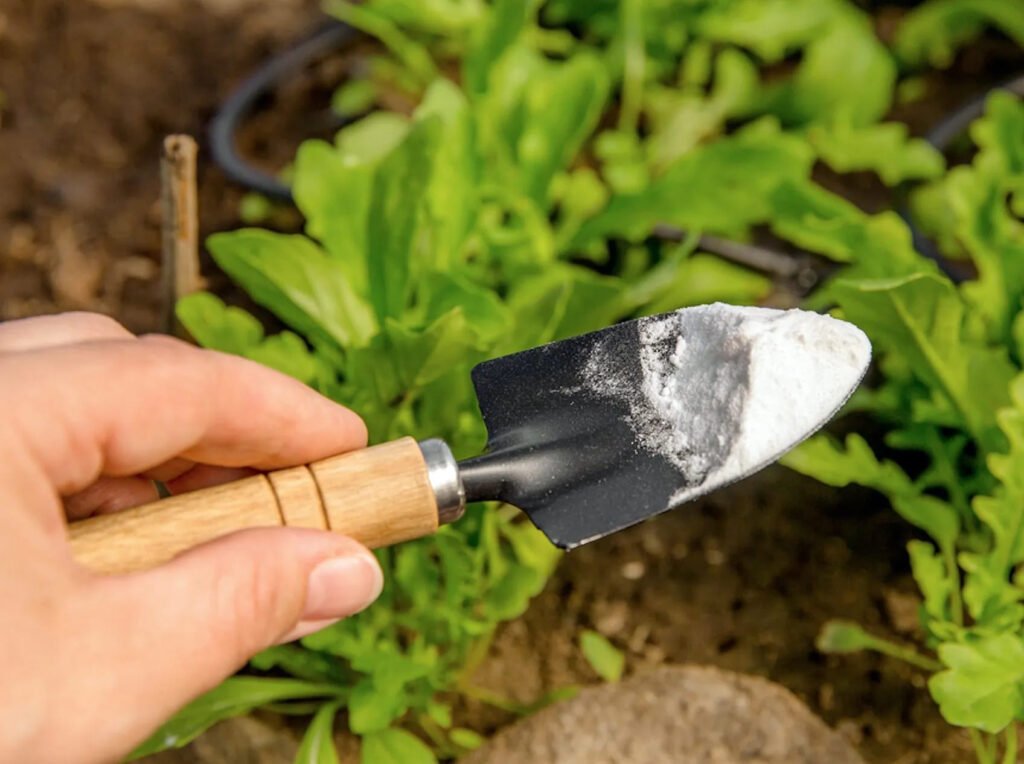
2. Aspirin for Stronger Plants
This one might surprise you, but aspirin can actually boost a tomato plant’s immune system. Salicylic acid, the active ingredient in aspirin, triggers a plant’s natural defense response, making it more resistant to diseases. Dissolving one or two aspirin tablets in a gallon of water and using it as a foliar spray can enhance plant resilience and even encourage larger yields.
3. Epsom Salt for Greener Leaves and Better Fruit
Tomato plants are prone to magnesium deficiency, which often causes yellowing leaves and poor fruit production. Epsom salt (magnesium sulfate) is an easy fix—just dissolve 1 tablespoon in a gallon of water and use it to water your plants once a month. You can also sprinkle a small amount around the base of the plant for slow-release benefits. This helps keep leaves vibrant green and promotes better flowering and fruiting.
4. Mulching with Banana Peels for a Potassium Boost
Tomatoes love potassium, and banana peels are full of it! Instead of throwing them away, chop banana peels into small pieces and bury them in the soil around your tomato plants. As they decompose, they’ll slowly release potassium and other beneficial nutrients that support fruit development and overall plant health.
5. Coffee Grounds for Nitrogen and Pest Control
Used coffee grounds are a fantastic organic fertilizer that provides a nitrogen boost to tomato plants. Sprinkling them around the base of the plant enriches the soil while also deterring pests like slugs and ants. Just be sure to use coffee grounds in moderation—too much can make the soil overly acidic.
6. Eggshells for Calcium and Preventing Blossom End Rot
Blossom end rot—a frustrating condition where the bottom of tomatoes turns black and rots—is often caused by calcium deficiency. Crushed eggshells are a natural and effective way to add calcium to the soil. Simply dry the shells, crush them into small pieces, and mix them into the soil near the roots. As they break down, they’ll slowly release calcium to help prevent this common problem.
Sometimes, the best gardening solutions come from everyday household items. These simple, science-backed hacks can help strengthen your tomato plants, improve yields, and keep diseases at bay—without resorting to harsh chemicals. Give them a try and see the difference in your next tomato harvest!
Managing Tomato Plant Shoots and Leaves
When it comes to maintaining healthy and productive tomato plants, knowing which shoots and leaves to remove can make all the difference. Pruning isn’t just about cutting randomly—it’s about strategically managing growth to maximize fruit production and reduce disease risk. Let’s break it down.
Which Shoots to Remove on Tomato Plants?
Tomato plants tend to grow aggressively, producing side shoots—commonly called suckers—that sprout between the main stem and branches. While they might seem harmless, these suckers can sap energy from the plant, leading to excessive foliage at the expense of fruit development.
How to Identify and Remove Suckers:
- Look for small shoots growing at a 45-degree angle in the leaf axils (where the leaves meet the main stem).
- On indeterminate varieties, remove most suckers to keep the plant focused on producing high-quality fruit rather than excessive greenery.
- On determinate varieties, leave some suckers intact since these plants have a limited fruiting period, and removing too many can reduce yield.
- Use clean pruning shears or pinch them off with your fingers when they are small (1-2 inches long) to avoid stressing the plant.
Which Leaves to Remove on Tomato Plants?
Not all leaves are beneficial to keep. Some actually contribute to disease spread and hinder airflow. The key is knowing which ones to cut and when.
Leaves to Remove for Better Growth:
- Lower Leaves: The oldest leaves at the bottom of the plant are the most susceptible to soil-borne diseases. Trim them to prevent issues like blight and mold.
- Crowded Interior Leaves: If the center of your plant is too dense, airflow decreases, leading to higher humidity and increased disease risk. Thinning out some interior leaves can help.
- Yellowing or Diseased Leaves: Any leaves showing signs of disease (spots, wilting, discoloration) should be removed immediately to prevent spreading.
Bonus Tip: When pruning leaves, avoid removing too many at once. A plant still needs its foliage to photosynthesize effectively. Focus on strategic trimming rather than aggressive defoliation.
Pruning isn’t about stripping the plant bare—it’s about helping it direct energy where it’s needed most. By removing the right shoots and leaves, you improve air circulation, reduce disease risk, and encourage stronger fruit development. The goal is to create a balanced, well-structured plant that thrives throughout the season.
FAQs – How To Prune Tomatoes For Maximum Yield?
How often should I prune my tomato plants?
Prune your tomato plants regularly, ideally once a week. Indeterminate varieties benefit from consistent pruning throughout the growing season, while determinate varieties require minimal pruning after initial shaping.
What happens if I don’t prune my tomato plants?
Without pruning, tomato plants can become overly bushy, reducing airflow and increasing the risk of diseases like blight and mildew. Excess foliage can also divert energy away from fruit production, leading to smaller or fewer tomatoes.
Can I remove too many leaves when pruning?
Yes! Over-pruning can weaken the plant, reducing photosynthesis and slowing fruit growth. Always aim for a balance—remove unnecessary suckers and diseased leaves while leaving enough foliage to support healthy growth.
Should I prune determinate and indeterminate tomatoes the same way?
No. Indeterminate varieties need regular pruning to manage growth and improve fruit quality. Determinate varieties, which have a set fruiting period, require minimal pruning to avoid reducing their yield.
What’s the best time of day to prune tomato plants?
Prune in the morning on a dry day. This gives the cuts time to heal before evening moisture sets in, reducing the risk of fungal infections.
Do I need special tools for pruning tomatoes?
A clean pair of pruning shears or garden scissors is recommended. For small suckers, pinching them off with your fingers is sufficient. Always sanitize your tools between plants to prevent disease spread.
Can pruning improve tomato flavor?
Yes! By directing energy to fruit production instead of excess foliage, pruning can result in larger, sweeter, and more flavorful tomatoes.
Is there a wrong way to prune tomato plants?
Yes. Avoid cutting the main stem, removing too many leaves, or pruning during wet conditions. Always prune strategically, focusing on airflow, disease prevention, and fruit production.
What should I do with the pruned leaves and suckers?
Discard diseased leaves in the trash to prevent spreading infections. Healthy trimmings can be composted or used as mulch.
How do I know if I’ve pruned correctly?
A well-pruned tomato plant should have a strong main stem, good airflow, and visible fruit clusters receiving ample sunlight. If the plant looks too bare, you may have removed too much foliage.
How Many Leaves Should I Take Off My Tomato Plants?
Remove only the lower leaves that are touching the soil or those that are yellowing or diseased. For indeterminate varieties, keep the plant balanced by leaving enough foliage to shade developing fruit and support photosynthesis.
What Does Baking Soda Around a Tomato Plant Do?
Baking soda can help prevent fungal diseases like powdery mildew and blight. When sprinkled lightly around the base of the plant, it creates an alkaline environment that discourages fungal growth. However, use it sparingly to avoid altering soil pH too much.
Conclusion and Best Practices
Pruning tomato plants isn’t just about tidying up—it’s a crucial technique that can mean the difference between a mediocre harvest and an abundant, flavorful one. By carefully managing the plant’s growth, you’re directing energy where it matters most: into producing healthy, juicy tomatoes.
Key Takeaways for Successful Pruning
- Know Your Tomato Variety – Indeterminate tomatoes need regular pruning throughout the season, while determinate varieties require minimal intervention.
- Remove Suckers Strategically – Not all suckers are bad, but removing excess growth improves airflow and directs energy into fruit development.
- Be Gentle with Leaf Removal – Taking off too many leaves can weaken the plant. Focus on removing diseased, yellowing, or overcrowded foliage.
- Prune at the Right Time – Early morning on a dry day is best to minimize disease risk and allow cuts to heal quickly.
- Use Clean, Sharp Tools – Dirty tools spread disease. Always sanitize your pruning shears between plants.
- Watch for Signs of Over-Pruning – If your plant looks too bare or fruit is getting sunscald, you may have removed too much foliage.
Final Thoughts
Think of pruning as a way to guide your tomato plants toward their full potential. With a little patience and the right technique, you’ll maximize yields, reduce disease, and enjoy healthier, tastier tomatoes. Whether you’re a backyard gardener or growing on a larger scale, mastering pruning will make a noticeable difference in your harvest.
Happy gardening!
